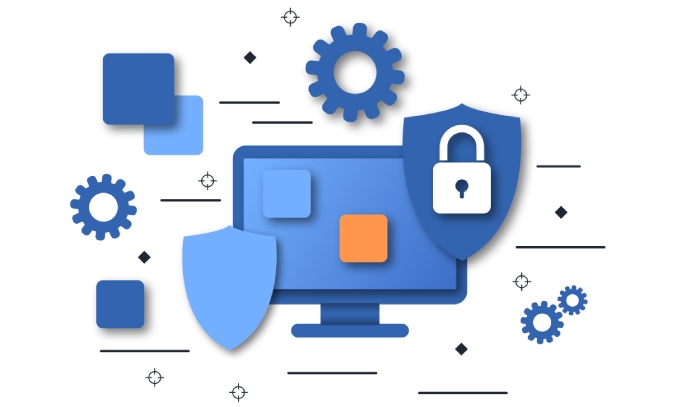Blue Yonder, an AI-oriented supply chain management platform, has been attacked by threat actors. The breach, identified as a ransomware attack, happened on November 21st, 2024. The attack has resulted in a massive impact on the company’s major infrastructure, which it utilizes to offer premium services to its customer base.
What exactly does Blue Yonder do?
Formerly known as JDA Software, Blue Yonder is an Arizona-based supply chain management company that works with high-profile brands such as Renault, Albertson’s, Starbucks, 7-Eleven, Procter and Gamble, Nestle, DHL, Sainsbury, 3M, Kroger, Ace Hardware, Ann Morrisons, Anheuser Busch, Bayer, and so on.
A global leader in digital supply chain management backed by artificial intelligence, Blue Yonder handles everything- from demand forecasting and inventory optimization to transportation and delivery. The Panasonic subsidiary has a customer base of 3,000 companies and employs as many as 6,000 team members. A world leader in supply chain management solutions with an annual revenue of over a billion USD, Blue Yonder is bound to create ripples because of the ransomware attack.
What actually happened?
The private cloud environment of Blue Yonder was attacked by ransomware. The supply chain management giant has acknowledged the cyberattack. Ever since the attack, Blue Yonder has been working closely with external cybersecurity experts to retain the extent of the damage. Also, they aim to identify vulnerabilities and restore normal operations. However, Blue Yonder has not yet finalized any timeline for full recovery.
The ransomware attack has not impacted the Azure public cloud environment. However, the attack on the private cloud setup is a staggering reminder of the heightened risk of cyberattacks on supply chain management companies.
Impact of ransomware attack on Blue Yonder
Key UK retailers like Sainsbury’s and Morrisons rely completely on Blue Yonder to manage inventory and forecast demand. The ransomware attack has hit these two firms hard.
Sainsbury’s has claimed that mitigation steps have already been taken to disrupt the extent of the damage. However, the ransomware attack has introduced intricacies to Blue Yonder’s supply chain transformation initiatives.
Morrison’s has gone offline and is currently operating manually to produce fresh and chilled goods. However, the attack has resulted in order cancellations. The availability rate for certain items also dropped by 60%.
Businesses like Tesco, Asda, Waitrose, and many other FMCG companies such as ABInBev, Kimberley-Clark etc., also use Blue Yonder services. They all are taking precautionary measures to prevent any kind of unfortunate cyber instances.
Starbucks worst hit by Blue Yonder breach!
Never in its wildest dream had Starbucks thought about such a cyberattack on its supply chain management solution provider! Because of the Blue Yonder ransomware attack, Starbucks is struggling with pay and scheduling issues.
Because of the cyberattack, Starbucks is finding it hard to keep track of its employee hours. They are also struggling with processing payments for the employees. As a result, Starbucks is putting in temporary measures to combat the crisis. Starbucks’ employee management system has gone offline.
For the time being, Starbucks has instructed the employees to log into their shifts manually. Payments up until 17 November will stay unaffected. However, payment for subsequent dates may face discrepancies. Starbucks has assured the employees of complete compensation for receiving less than the due pay or having unused vacations or sick leaves. In case some employees come across instances of overpayments, Starbucks will not reclaim the same.
Although the premium coffee experience giant promises to compensate the employees for any kind of inconvenience, the Blue Yonder attack is still posing a huge difficulty for the employees. First of all, payments are delayed. There is yet no timeline available for things going back to normal. This comes as a huge blow to employees who have been waiting the entire year to take vacations during this holiday season.
Although the employee management system is the worst hit at Starbucks, the customer-facing operations are being carried out smoothly.
A closer connection between holidays and the Blue Yonder attack!
The ransomware attack on Blue Yonder is quite similar to the recent cyberattacks on supply chain systems. The threat actors operate tactfully, targeting a single but global brand and thereby impacting multiple firms at one go.
Such attacks increase manifolds during the holiday seasons, as the level of cybersecurity seems to be a little less rigid around this time. This happens primarily because the IT departments are not generally fully functional during the holiday season, as many IT and cybersecurity experts tend to be on vacation. As per a recent study, as many as 1000 organizations across the UK, the US, Germany, and France significantly reduce staff size by a whopping 50% around the weekends and holiday season.
Threat actors strategically plan their attacks, often waiting for the perfect moment to strike. Experts recommend that organizations maintain at least 75% of their regular staff during holidays to ensure robust phishing protection and safeguard against the tactics and schemes of hackers and other threat actors.
Lessons learned!
The attack on Blue Yonder is not the first of its kind. It is a glaring example of how a single attack can create a rippling effect and damage multiple companies and their services with just one single blow. On the basis of the ongoing trend of attacking supply chain management providers, experts urge businesses to:
-
Strengthen their cybersecurity setup
Always focus on building a robust protection system for critical infrastructure. Regular updates and assessments are also mandatory. Investing in effective cybersecurity mechanisms can be highly beneficial in the long run.
-
Come up with contingency plans
Always have a plan B ready for potential outages. Businesses must have a manual or offline system ready just in case a cyberattack disrupts online functioning. This helps in mitigating the impact of cyberattacks to a great extent.
-
Analyze third-party risks
Collaboration with third-party tech support can indeed make your work easy. But at the same time, they make your business prone to threat attacks. Make sure you collaborate only with service providers who comply with cybersecurity regulations and norms.



